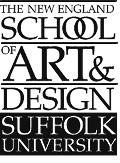

Styles of the Victorian Period in England and America
(1837 - 1901)
 |

Styles of the Victorian Period in England and America
|
| American Architectural Styles | America Furniture Styles |
| Greek Revival 1800-1860 | Transitional (Late Empire) 1830-40ís |
| Gothic Revival 1820-1860 | Gothic Revival 1830-50ís |
| Octagonal 1850-1870 | Rococo Revival 1840-60ís |
| Stick 1850-1890 | Elizabethan Revival/Tudor 1840ís |
| Second Empire/Mansard 1855-1890 | Louis XVI/Second Empire after 1860 |
| Italianate 1860-1890 | Renaissance Revival 1850-75 |
| Queen Anne 1875-1910
Subtypes Spindle Free classical Half-timbered gable Patterned masonry |
Egyptian Revival after 1860 |
| Shingle 1880-1955 | Aesthetic Movement 1850-1890ís
Art Furniture and Eastlake style |
| Colonial revival 1880-1955
(Colonial styles and Federal styles) |
|
| Neoclassical Revival 1890-1950 | |
| Beaus Arts 1885-1930 | |
| Chateauesque 1880-1910 | |
| Richardsonian Romanesque 1880-1940 | |
| Renaissance Revival 1880-1935 | |
| Tudor 1890-1940 | |
| Frank Lloyd Wright and
the Prairie Style 1893-1920
see also Green and Green |
Arts & Crafts 1860-1890ís
Mission Style 1890-1915 (Stickley, Roycrafters Craftsman 1905-1930 |
| Art Nouveau 1890-1910 | Art Nouveau 1890-1910 |
| See also Louis Sullivan |
| The definition of these
three terms summarize the period:
Historicism seeks to recreate past styles through observation , measured drawings and archaeological information. (see Pugin and Davis) |
| Romanticism uses past styles to stir emotions of the beholder by associative approach, i.e., Gothic: chivalry and religious connotations. Renaissance: scholarship and association with secular wealth. |
| Eclecticism unites elements of Historicism and Romanticism. It takes stylistic features from any and all historic periods. It gained wide approval during this time due to its freedom of design. Eclecticism is responsible for chaotic mixtures characterizing most interiors after 1830 and many residential styles of architecture. |
Summary Questions: The Victorian Period in England and America
1.Explain how iron developed from a structural element used by engineers into a building system used by architects? What was one of the first large scale building to use this material? Name two benefits realized by using iron structural supports in buildings instead of traditional brick or masonry? how were the exteriors of these building treated?
2.As capitalism grew, why were International Exhibitions needed? Name two major structures erected for these events. What purpose did they serve?
3.Be able to identify the following
Victorian Furniture styles;
Transitional/Late
Empire
Rococo Revival (John
Henry Belter)
Renaissance
Revival
Gothic Revival
Elizabethan/Tudor
Revival
Louis XVI Revival
Egyptian
Revival
Arts
and Crafts Furniture: Morris et al, Voysey, Baillie-Scott, Stickley, Roycrafters,
Green and Green, etc.
Art/Aesthetic
Furniture: Eastlake Hints on Household Taste, Talbert, Burges, Godwin,
Collcut
Thonet
Furniture
4.Be able to identify and/or name 6 innovations of the Victorian period.
5.Be able to name and/or identify 8 new materials used for furniture.
6.Be able to identify the following
architectural styles and their visual characteristics:
Gothic
Revival
Italianate
Renaissance
Revival
Second Empire/Mansard
Style
Octagon
Style
Stick Style
Queen
Anne Style and the subtypes
Chateauesque
Style
Georgian/Colonial
revival
Jacobethan/Tudor
Revival
Shingle Style
Richardsonian
Romanesque
Beaus Arts Classicism
Neoclassical Revival
7.Discuss the Arts and Crafts Movement in England. Who were its founders? What were the influences behind the style? How did they view the machine in the production of furniture? How did this view thwart their ultimate goal? Describe the architecture and furniture of this style in terms of their visual characteristics.
8. Discuss the Aesthetic Movement in England. What did it promote? How did it view the machine in the process of furniture production? What were the influences behind the style? How did it differ from the Arts and Crafts movement? What is art furniture?
9. Who was Thonet? What process did he patent? Why would he be considered an early pioneer in modern furniture production?
10.Who was H.H. Richardson? What was characteristic of his style of architecture and furniture?
11.Discuss the furniture of Gustav Stickley. What are the visual characteristics? How did he promote his furniture?
12.Discuss the firm of McKim, Mead and White. How did their style change? What were some of their most important works discussed in this class?
13.Discuss the style of Richard Morris
Hunt. What were two of his most important works discussed in this class?
| Syllabus | Neoclassical | Art Nouveau | Sullivan & Wright | Modern | Contact Marg |